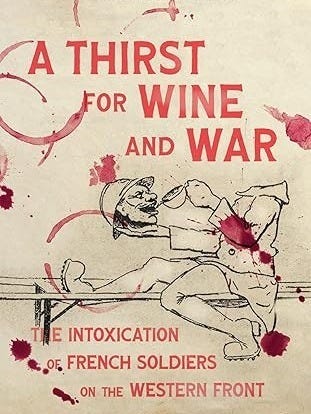As today is the 11th of November (Armistice Day), I thought it would be fitting to dedicate this week’s post to investigating the role of Wine and impact on Wine Production during World War I in France.
Around one month after the war began in 1914, the French Army began to distribute daily rations of wine to its soldiers, to begin with it was a 250ml, but by 1917 it had increased to the equivalent of a full bottle each day (750ml). However, it was often diluted with water and only around 9% ABV – it wasn’t the best tasting wine and was nicknamed ‘Pinard’. The marching song ‘Ode du Pinard’ described the absolute truth about the quality of the wine; that it was terrible but the only thing going. Regardless of this, wine was taken on as a symbol of national unity and identity during the war – reminding the soldiers of their homes and the reason for fighting.
There were multiple objectives behind this rationing, other than sustaining morale in the trenches to make the soldiers more willing to endure suffering and boredom, there was a medical consensus about the benefits of wine drinking and to support the French wine industry - as there were fears of losing its main consumers. During 1915, the French National Assembly voted to send Champagne (which symbolises celebration and peace) as a morale booster to troops and military hospitals on a regular basis!
However, it wasn’t just the French soldiers that were drinking wine on the frontlines and in the Trenches but soldiers from other countries. The wine was usually a cheap Vin Blanc or Vin Rouge, with the amalgamation of accents from multiple countries (French, English, American, Australian etc.) these were often referred to as ‘Vin Blank’ and ‘Vin Roush’. These developed during the war into slang, ‘Von Blinked’ meaning drunk and ‘Point Blanc’ meaning hungover – it is believed that a variation of these lead to the term that is still used today to describe cheap, low-quality wine - ‘Plonk’.

War changed the French wine industry forever by destroying much of the landscape, one of the key geographical strategic points on the Western Front was the Champagne region. This region lost more than half its population, and an estimated 40% of its vineyards.
In Epernay (a city in the Champagne region), the mayor was one of the few officials who didn’t flee when the Germans invaded on September 4 1914 – “I will stay no matter what happens, to reassure and to comfort those who wish to leave by cannot. And I will do all that is humanly possible to defend them”, Maurice Pol-Roger (head of Pol Roger Champagne & Epernay’s mayor). The best-known, most loyal customer of Pol Roger Champagne was Winston Churchill who famously spurred on the troops by saying “Remember, gentlemen, it’s not just France we are fighting for, it’s champagne”.




